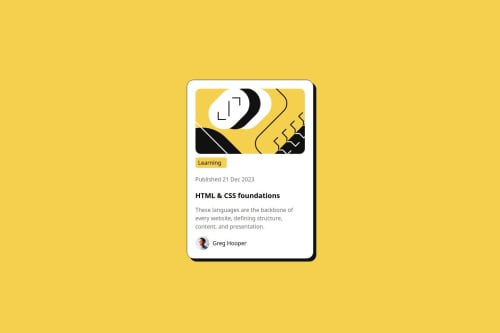Submitted about 1 year agoA solution to the Blog preview card challenge
Blog preview card solution
@rc-0105

Solution retrospective
What are you most proud of, and what would you do differently next time?
Im proud that i could center correctly the main container, also doing the hover and the box shadows make me be more aware of the things that could be done.
What challenges did you encounter, and how did you overcome them?I didnt know how to make the main container flex work the right way, all the content where overflowing so i had to see some tutorials to get in the mood.
What specific areas of your project would you like help with?I am new to this kind of development so if you have comments ill be greatfull to know.
Code
Loading...
Please log in to post a comment
Log in with GitHubCommunity feedback
No feedback yet. Be the first to give feedback on Ricardo Alberto Carrero Bator's solution.
Join our Discord community
Join thousands of Frontend Mentor community members taking the challenges, sharing resources, helping each other, and chatting about all things front-end!
Join our Discord